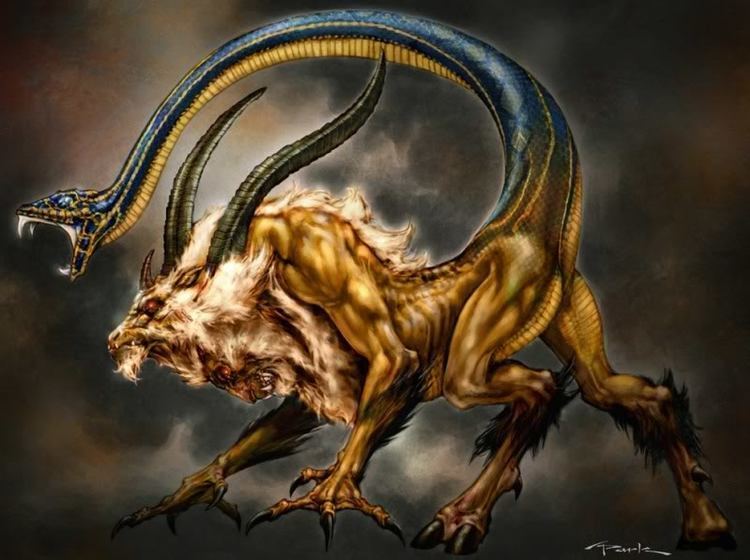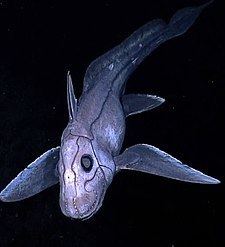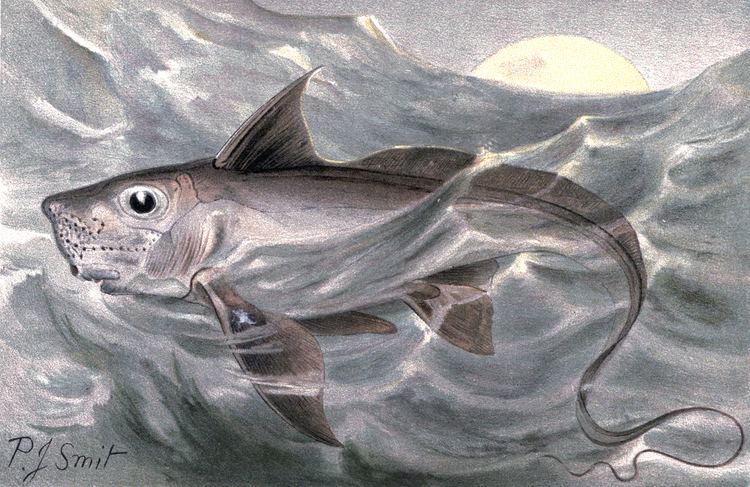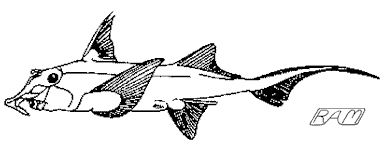Phylum Chordata Scientific name Chimaeriformes Rank Order | ||
 | ||
Similar Chondrichthyes, Holocephali, Hydrolagus, Rabbit fish, Elasmobranchii | ||
Ghost shark hd 1080p chimaera monstrosa rat fish havmus poison
Chimaeras are cartilaginous fishes in the order Chimaeriformes, known informally as ghost sharks, rat fish (not to be confused with the rattails), spookfish (not to be confused with the true spookfish of the family Opisthoproctidae), or rabbit fish (not to be confused with the true rabbitfishes of the family Siganidae).
Contents
- Ghost shark hd 1080p chimaera monstrosa rat fish havmus poison
- Pacific black ghost ratfish chimaera
- Description and habits
- Classification
- Phylogenetics
- References

At one time, a "diverse and abundant" group (based on the fossil record), their closest living relatives are sharks, though in evolutionary terms, they branched off from sharks nearly 400 million years ago and have remained isolated ever since. Today, they are largely confined to deep water.

Pacific black ghost ratfish chimaera
Description and habits

Chimaeras live in temperate ocean floors down to 2,600 m (8,500 ft) deep, with few occurring at depths shallower than 200 m (660 ft). Exceptions include the members of the genus Callorhinchus, the rabbit fish and the spotted ratfish, which locally or periodically can be found at relatively shallow depths. Consequently, these are also among the few species from the Chimaera order kept in public aquaria. They have elongated, soft bodies, with a bulky head and a single gill-opening. They grow up to 150 cm (4.9 ft) in length, although this includes the lengthy tail found in some species. In many species, the snout is modified into an elongated sensory organ.
Chimaeras, belonging to the class Chondrichthyes, possess skeletons made entirely of cartilage, distinguishing them from bony fish. Their skin is smooth and is predominantly covered with placoid scales, contributing to their unique texture. These marine creatures exhibit a color spectrum from black to brownish-gray, allowing them to blend into the deep-sea environments they inhabit. For defense mechanisms, most chimaeras are equipped with a venomous spine situated anterior to the dorsal fin, serving as a deterrent against predators.
Chimaeras resemble sharks in some ways: they employ claspers for internal fertilization of females and they lay eggs with leathery cases. They also use electroreception to locate their prey. However, unlike sharks, male chimaeras also have retractable sexual appendages on the forehead (a type of tentaculum) and in front of the pelvic fins. The females lay eggs in spindle-shaped, leathery egg cases.
They also differ from sharks in that their upper jaws are fused with their skulls and they have separate anal and urogenital openings. They lack sharks' many sharp and replaceable teeth, having instead just three pairs of large permanent grinding tooth plates. They also have gill covers or opercula like bony fishes.
Classification
In some classifications, the chimaeras are included (as subclass Holocephali) in the class Chondrichthyes of cartilaginous fishes; in other systems, this distinction may be raised to the level of class. Chimaeras also have some characteristics of bony fishes.
A renewed effort to explore deep water and to undertake taxonomic analysis of specimens in museum collections led to a boom during the first decade of the 21st century in the number of new species identified. They are 50 extant species in six genera and three families are described; an additional three genera and two families are only known from fossils):
Phylogenetics
Tracing the evolution of these species has been problematic given the scarcity of good fossils. DNA sequences have become the preferred approach to understanding speciation.
The order appears to have originated about 420 million years ago during the Silurian. The 39 extant species fall into three families – the Callorhinchids, Rhinochimaerids and Chimaerids with the callorhinchids being the most basal clade. The families appear to have diverged during the late Jurassic to early Cretaceous (170–120 Mya.)
